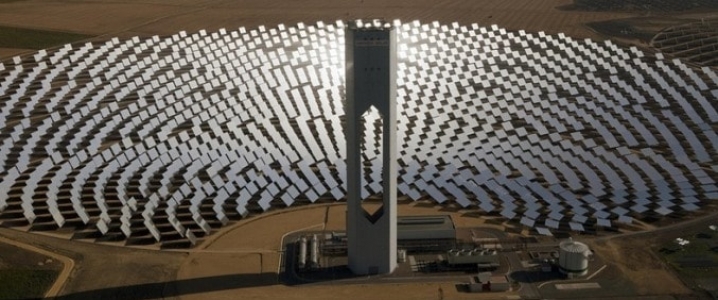Thanks to continuously declining costs, a hybrid renewable electricity generation system that combines wind, solar, and storage could become competitive with the cheapest fossil fuel electricity in the United States—combined-cycle natural gas generation, an MIT professor suggests.
John Deutch, an Institute Professor at MIT, has recently presented a study, ‘Demonstrating Near Carbon Free Electricity Generation from Renewables and Storage’, at an energy seminar at Stanford University.
According to Deutch, the best way to see if the hybrid electric systems (HES) of wind, solar, and storage could compete in costs with natural gas-fired electricity generation is to organize a large-scale demonstration to show if those HES could meet electricity demand of a relatively large service area “rather than rely on government sponsored large scale demonstration projects or regulatory mandates compelling deployment of storage.”
“Uncharacteristically I have been an optimist—I am an optimist—about this, and I believe we are very close to having an economically competitive triad—wind, solar and storage—to produce electricity at a cost as low as the cheapest fossil alternative, which is natural gas combined cycle,” Deutch said during his presentation. “We are close to having this be a commercial operation.”
The large-scale demonstration would show the private sector if those hybrid systems could be competitive, he said, noting that the base analysis was made for the ERCOT service area in Texas, and additional studies were made for Iowa and Massachusetts. Related: Morgan Stanley: New Oil Discovery Could Spur China’s Shale Boom
According to Deutch, Puerto Rico and Hawaii could be suitable places for energy developers to show HES viability. The MIT scientist proposes developers to bid for 20-year contracts with a utility and all the government has to do is to ensure a ‘regulatory wrap’ to allow the project.
“Wind plus solar plus storage is going to be here and it’s going to be here soon,” Deutch said.
The job now is to decide how we are going to make progress on that and how to get the private sector to deploy that in the shortest period of time, he added.
Just last week, Portland General Electric Company and a unit of NextEra Energy unveiled plans to build a new energy facility in Eastern Oregon combining 300 megawatts of wind generation with 50 megawatts of solar generation and 30 megawatts of battery storage. The Wheatridge Renewable Energy Facility will be the first of this scale in North America to co-locate and integrate these three technologies, the developers said. The Wheatridge Energy Facility will generate power using wind and solar technology, while the battery will store that energy so it can be used at any time. Together, these technologies will ensure energy reliability from renewable resources, the companies say.
Meanwhile, engineers continue to look for cheaper storage solutions that could help wider-scale deployment of renewable energy.
MIT engineers, for example, have recently proposed a concept for a renewable storage system that would store solar and wind energy in the form of white-hot liquid silicon. The design, dubbed ‘sun in a box’, stores heat generated by excess electricity from solar or wind in tanks of white-hot molten silicon, and then converts the light from the glowing metal back into electricity when it’s needed. Related: Flurry Of Bullish News Boosts Oil Prices
“We’re developing a new technology that, if successful, would solve this most important and critical problem in energy and climate change, namely, the storage problem,” said Asegun Henry, the Robert N. Noyce Career Development Associate Professor in the Department of Mechanical Engineering at MIT.
Renewable energy in the United States continued to expand in 2018, according to the 2019 Sustainable Energy in America Factbook published by BloombergNEF (BNEF) and the Business Council for Sustainable Energy (BCSE). Last year, renewable energy—including hydropower—provided 18 percent of total U.S. power generation, up from 11 percent back in 2009. Wind and solar capacity has more than quadrupled since 2009—from 36.2 GW to 164.6 GW, according to the factbook.
In addition, battery storage costs fell further in 2018, with lithium-ion battery prices down by another 18 percent year-on-year, “boosting both EVs and stationary storage applications and encouraging electric utilities to sign power purchase agreements pairing storage with solar and wind,” the report says.
By Tsvetana Paraskova for Oilprice.com
More Top Reads From Oilprice.com:
- Where Will Putin Build His Next Gas Pipeline?
- Why The Oil Rally Isn’t Over Yet
- Does Saudi Arabia Really Have As Much Oil As Analysts Think?


















